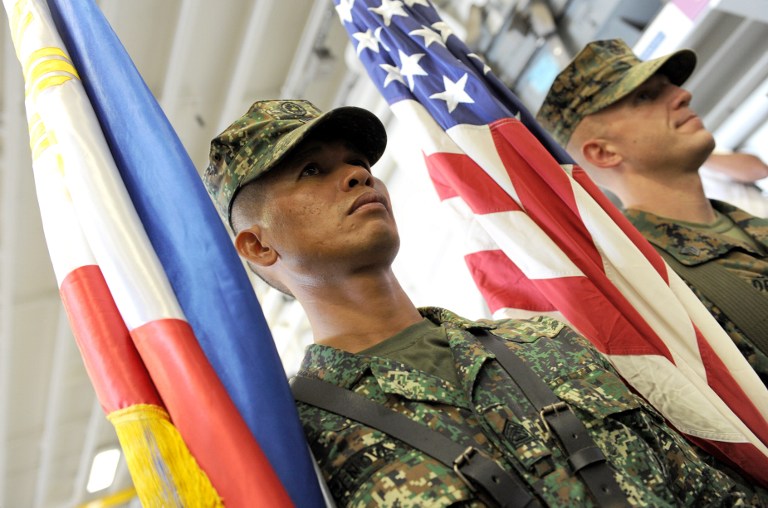SUMMARY
This is AI generated summarization, which may have errors. For context, always refer to the full article.

MANILA, Philippines – The Philippines is considering formal talks with the United States on the “joint use” of military facilities in a possibly new agreement, Philippine Ambassador to the US Jose Cuisia Jr said Tuesday, July 16.
In a forum with foreign correspondents, Cuisia said the possibly new deal could “expand” the current Visiting Forces Agreement (VFA).
The ambassador said if the two countries will forge a new agreement, it is because they “may need to expand” the VFA. “We may have to build some additional facilities, and to build additional facilities, there has to be some agreement to support it,” he said.
On the other hand, he said the Philippines and the US might not need a new agreement after all, as the deal should fall within the VFA’s boundaries. “Is there a need for a formal agreement? Because if it is covered by the VFA, the question is, is there a need for a separate agreement?” Cuisia said, noting this is an issue being studied by lawyers.
“Let me stress: it’s a joint use of facilities,” Cuisia added. “There is no mention at all of a permanent base, because I think the US is very well aware that it should not be (beyond) our Constitution.”
He also said the joint use could cover civilian facilities, but he declined to divulge details, because “there’s been no agreement.”
Cuisia made these statements amid heated debates on giving the US and Japan greater access to the Philippines’ military bases. “If and when there is agreement on the access, then there will be equipment coming in from the (United) States,” Defense Secretary Voltaire Gazmin had said.
Senator Juan Ponce Enrile, for his part, had criticized this plan as a possible means to go around constitutional bans. Enrile said the VFA could not be used to justify this plan, because the VFA “does not contemplate the existence of a permanent presence of foreign military troops in the Philippines.”
President Benigno Aquino III had already stated that the Philippines would welcome an increased US military presence, amid tense disputes with China over competing claims to parts of the South China Sea. In a rebalancing policy that is seen to counter Beijing, the US had said it plans to shift most of its troops to the Asia-Pacific.
Informal talks, for now
On joint use, Cuisia said formal negotiations would depend on the President.
“There have been no formal negotiations,” the ambassador said. “These are informal discussions but soon, we hope, when the President gives the authority for the team to undertake formal negotiations, then that’s when negotiations start.”
He said both sides have discussed the issue at the ministerial level, but on a “very broad scale,” during the two-plus-two meetings between the Philippines and the US.
Both sides have begun “bringing it down” to the undersecretary level, involving the Departments of Defense and Foreign Affairs. “But I guess before an agreement is finally reached by both sides, it will be brought to the ministerial level,” Cuisia said.
The US had tens of thousands of troops stationed in the Philippines, at the Clark Air Base and Subic Naval Base north of Manila, until the early 1990s.
The US, a former colonial ruler of the Philippines, was forced to abandon the bases amid anti-US sentiment and a row over rent. The constitution now bans any permanent foreign bases in the Philippines.
However the Clark and Subic facilities, now partly converted to business use, still host and service US military aircraft and warships on short-term exercises.
One of those began in June in waters between the Philippines’ main island of Luzon and a disputed shoal now occupied by China.
Several hundred US Special Forces troops have also been rotating through Mindanao since early 2002 to train Filipino soldiers who are fighting Islamic militants. – with reports from Agence France-Presse/Rappler.com
Add a comment
How does this make you feel?
There are no comments yet. Add your comment to start the conversation.